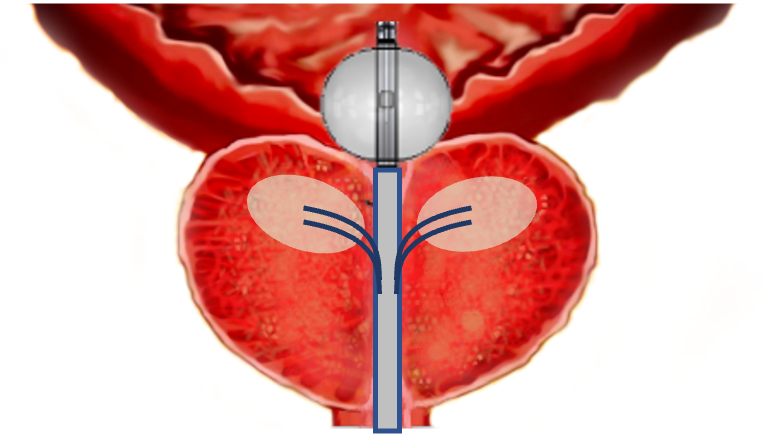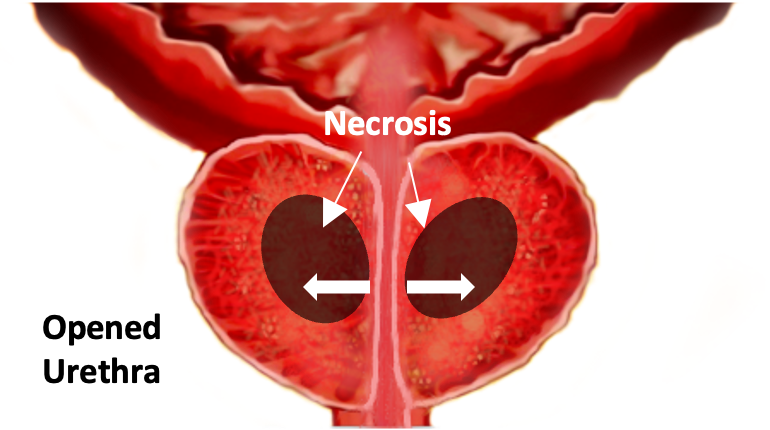Products
Prostacare is currently researching the use of transurethral water electrolysis as a simple, painless and safe method of treating the root cause of lower urinary tract symptoms associated with BPH. This office-based treatment should not require general anesthesia can be performed in less than 30 minutes, and may give effective relief to men experiencing mild to moderate prostate enlargement.
How it Works
Step 1: Screening
The patient will be assessed via ultrasound or MRI to ensure they are suitable to undergo the water electrolysis procedure. This includes eliminating a significant middle lobe and measuring the dimensions of the prostate. A pre-treatment cyctoscopy is also recommended to review the degree of urethral obstruction.

Step 2: Treatment
The device is inserted to the patient via the urethra and a balloon is inflated in the bladder, just like a Foley catheter. Two fine electrodes are deployed into each side of the prostate and the clinician activates the low voltage battery powered energy source. A high ph area is created at one electrode and a low ph area at the other. This causes cellular necrosis at precise locations.

Step 3: Post-Treatment
The catheter is removed immediately following treatment and the ph of the treated prostate tissue quickly buffers back to neutral. Over the next week, the necrotic zones gradually resorb, causing the prostate to shrink, relieving pressure on the urethra


